Uposatha
IntroductionAs per Bible, the Sabbath is a religious day of rest every week as ordained by the Ten Commandments. In Buddhism, this sabbath is the Uposatha. The day was instituted by the Buddha to honour the request of King Bimbisara. The Buddha explained that this day was meant to purify the polluted mind which would in turn lead to inner tranquility and happiness. He urged the monks to disseminate the teachings to the lay people and recite the Patimokkha every second day Uposatha Day themselves.
The term Uposatha owes its origin to the Sanskrit word 'upavastha' which means the pre Buddhist fast day that preceded Vedic sacrifices. The weekly uposatha is observed on the basis of four phases of the moon - the full moon, the new moon and two quarter moon in between. In quiet a few communities, only the new moon and the full moon are kept as the uposatha day.
Today, the weekly day is observed in mostly the Theravada countries. The dates are chalked out on the basis of a difficult traditional formula that is based on the lunar calendar. Because of this, the dates, quiet a number of times, do not match with actual astronomical dates. To worsen the situation even more, the various sects of the Theravada Buddhism have different calendar.
The Five Most Important Uposatha Day
These five full moon uposatha day are of special mention.
- Vesak or the Buddha
Day : The day commemorates the three most important days in
the life of the Buddha – His birth, awakening and parinibbana.
- Asalha Puja
or the Dhamma Day : The Dhamma Day marks the first preachings
of the Buddha which He gave to a group of five monks. After His
discourse came to an end, one of the five monks, Ven. Kondañña,
urged the Buddha to accept Him as His disciple, thus paving way for the
rise of the Noble Sangha. The day also marks the beginning of the annual
Rains Retreat (vassa) the next day.
- Pavarana Day
: The Rains Retreat which begins on the day following the Dhamma
day continues for three months and concludes on the Pavarana day. The
next month sees the celebration of the Kathina ceremony in which laity
come together to make formal offerings of robe cloth and other
requisites to the Sangha.
- Magha Puja or
the Sangha Day : This day marks an important event in the
life of the Buddha when without taking His appointment, 1250 arahants
gathered at the Veruvana Monastery in the Rajgaha city. To this
assembly, the Buddha delivered the Ovada-Patimokkha Gatha, a summary of
the main points of the Dhamma.
- Anapanasati day : When the Rains Retreat came to an end,
the Buddha was extremely happy with the development of the assembled
monks. So much so, that He urged them to extend their retreat for yet
another month. At the end of the fourth month, He gave His instructions
on the mindfulness of breathing.
The day for a lay practioner is basically meant for observance of the Eight Precepts. They have to reaffirm their faith and commitment to the Dhamma. If a monastery is nearby, lay practioners visit them and present their offerings to the Sangha. Listening to the Dhamma talks, chanting special suttas and practising meditation in the late night also forms part of their practice.
For the monastic community, however, the practice differs a bit. They are required to undertake more intensive reflection and meditation. On the full and New Moon days, the recitation of the Bhikkhu Patimokkha (monastic rules of conduct) takes place. However, before the commencement of the recitation, the monks have to confess whether they have violated any monastic rules to another monk of the Sangha. The recitation itself, can take, anywhere between 30 minutes to an hour. In a number of monasteries, physical labour is stopped for the day.
Vesak or Visakha Puja
Significance of Vesak & Its
History
Vesak, the most important day in the Buddhist calendar around the world, celebrates the birth, enlightenment and passing away of Gautam Buddha. Its significance lies in it being associated with the Buddha and His universal message of peace. Though festivals were celebrated since long around the time around which Vesak is celebrated today, yet, the formal decision to mark it as the Buddha Day was taken at the first Conference of the World Fellowship of Buddhists (W.F.B.). This conference was held at Sri Lanka in 1950 and the resolution adopted here read,
"That this Conference of the World Fellowship of Buddhists, while recording its appreciation of the gracious act of His Majesty, the Maharaja of Nepal in making the full-moon day of Vesak a Public Holiday in Nepal, earnestly requests the Heads of Governments of all countries in which large or small number of Buddhists are to be found, to take steps to make the full-moon day in the month of May a Public Holiday in honour of the Buddha, who is universally acclaimed as one of the greatest benefactors of Humanity."

The Name Vesak - In India & Other Countries
The 2nd month in Hindu calendar is known as 'Vaisakha' and it is from here that Vesak draws its name. Vesak, itself, is a Sinhalese word for Pali 'Visakha'.
Vesak is known by different names in different countries. In India, Bangladesh and Nepal, it is Visakah Puja or Buddha Purnima while in Thailand, it is called Visakha Bucha. Buddhist in Vietnam celebrate it as Phat Dan while those in Indonesia call it Waisak. Sri Lankan and Malaysian Buddhist term it as Vesak (Wesak) and Tibetan Buddhist as Saga Dawa. In Laos and Myanmar, the festival is known as Vixakha Bouxa and Ka-sone respectively.
The Celebration Date - 2008
Vesak is celebrated on the first full moon of the Tauras (an astrological sign) which is quiet often in May in common years and June in leap years. In coming years, Vesak will be celebrated on following dates:
2008 - 18th June
The Celebrations
Vesak is a completely religious festival wherein the Buddhist are required to reaffirm their faith in the Buddha Dharma and vow to lead a noble religious life.
For this, Buddhist devotees gather in their respective area temple before dawn and attend the honourable hoisting of the Buddhist flag. Hymns are sung exalting the holy triple jewel - the Buddha, the Dharma and the Sangha. Offerings of flowers, candles and joss sticks are made. These offerings are symbolic of the ultimate reality of life - death. As the flowers wither away and the joss sticks burn out in time, so the life is destined to come to an end in due course of time.
Devotees are also called upon to avoid any kind of killing and eat vegetarian food on the day. In quiet a few countries, particularly in Sri Lanka, two days are marked out for the celebration of Vesak and all liquor shops and slaughter houses are closed by government orders. Also, a number of animals and birds are set free from captivity in a 'symbolic act to liberation'.
Buddhist monks recite verses given by the Buddha some 2500 years ago and call upon people to live with peace and harmony. Also, they urge people to respect other religious faiths as preached by their great teacher, Lord Buddha.
Unlike usual festivals, where people dress up beautifully and prepare delicious dishes, during Vesak, Buddhists, endeavour to bring a bit of happiness in the life of miserable people like the aged, handicapped and the sick. For this, they give away gifts in both cash and kind. Apart from this, devotees also distribute food amongst those who come into the temple to pay homage to the Buddha. Also, they lend a helping hand to adorn and lighten up the temple and paint scenes from the life of the Buddha.
Some Similar Festivals
Though Vesak is the main festival that marks the birth, enlightenment and passing away of Buddha, yet, in many other countries, festivals that mark only the birth of Buddha are also celebrated. Prominent amongst these is Hana-matsuri, also known as the Flower festival and celebrated on April 8 in Japan. In Hongkong, Macau, Taiwan and South Korea, the 8th day of the 4th moon is celebrated as Buddha's Birthday. It is infact, a public holiday in these countries.
Vesak, the most important day in the Buddhist calendar around the world, celebrates the birth, enlightenment and passing away of Gautam Buddha. Its significance lies in it being associated with the Buddha and His universal message of peace. Though festivals were celebrated since long around the time around which Vesak is celebrated today, yet, the formal decision to mark it as the Buddha Day was taken at the first Conference of the World Fellowship of Buddhists (W.F.B.). This conference was held at Sri Lanka in 1950 and the resolution adopted here read,
"That this Conference of the World Fellowship of Buddhists, while recording its appreciation of the gracious act of His Majesty, the Maharaja of Nepal in making the full-moon day of Vesak a Public Holiday in Nepal, earnestly requests the Heads of Governments of all countries in which large or small number of Buddhists are to be found, to take steps to make the full-moon day in the month of May a Public Holiday in honour of the Buddha, who is universally acclaimed as one of the greatest benefactors of Humanity."

The Name Vesak - In India & Other Countries
The 2nd month in Hindu calendar is known as 'Vaisakha' and it is from here that Vesak draws its name. Vesak, itself, is a Sinhalese word for Pali 'Visakha'.
Vesak is known by different names in different countries. In India, Bangladesh and Nepal, it is Visakah Puja or Buddha Purnima while in Thailand, it is called Visakha Bucha. Buddhist in Vietnam celebrate it as Phat Dan while those in Indonesia call it Waisak. Sri Lankan and Malaysian Buddhist term it as Vesak (Wesak) and Tibetan Buddhist as Saga Dawa. In Laos and Myanmar, the festival is known as Vixakha Bouxa and Ka-sone respectively.
The Celebration Date - 2008
Vesak is celebrated on the first full moon of the Tauras (an astrological sign) which is quiet often in May in common years and June in leap years. In coming years, Vesak will be celebrated on following dates:
2008 - 18th June
The Celebrations
Vesak is a completely religious festival wherein the Buddhist are required to reaffirm their faith in the Buddha Dharma and vow to lead a noble religious life.
For this, Buddhist devotees gather in their respective area temple before dawn and attend the honourable hoisting of the Buddhist flag. Hymns are sung exalting the holy triple jewel - the Buddha, the Dharma and the Sangha. Offerings of flowers, candles and joss sticks are made. These offerings are symbolic of the ultimate reality of life - death. As the flowers wither away and the joss sticks burn out in time, so the life is destined to come to an end in due course of time.
Devotees are also called upon to avoid any kind of killing and eat vegetarian food on the day. In quiet a few countries, particularly in Sri Lanka, two days are marked out for the celebration of Vesak and all liquor shops and slaughter houses are closed by government orders. Also, a number of animals and birds are set free from captivity in a 'symbolic act to liberation'.
Buddhist monks recite verses given by the Buddha some 2500 years ago and call upon people to live with peace and harmony. Also, they urge people to respect other religious faiths as preached by their great teacher, Lord Buddha.
Unlike usual festivals, where people dress up beautifully and prepare delicious dishes, during Vesak, Buddhists, endeavour to bring a bit of happiness in the life of miserable people like the aged, handicapped and the sick. For this, they give away gifts in both cash and kind. Apart from this, devotees also distribute food amongst those who come into the temple to pay homage to the Buddha. Also, they lend a helping hand to adorn and lighten up the temple and paint scenes from the life of the Buddha.
Some Similar Festivals
Though Vesak is the main festival that marks the birth, enlightenment and passing away of Buddha, yet, in many other countries, festivals that mark only the birth of Buddha are also celebrated. Prominent amongst these is Hana-matsuri, also known as the Flower festival and celebrated on April 8 in Japan. In Hongkong, Macau, Taiwan and South Korea, the 8th day of the 4th moon is celebrated as Buddha's Birthday. It is infact, a public holiday in these countries.
Asalha Puja Day
Background & SignificanceOne of the most important festivals of the Thervada Buddhists, the Asalha Puja Day or the Dhamma Day celebrates the first teaching of the Buddha. Elaborating on this, the Buddha gained enlightenment on the full moon of Vesakha - the sixth month. After this, He was not too keen to teach, but on the insistence of His friends who had spent several years journeying the Gangetic plains with Him, He decided to go to Benaras. From Gaya, the distance to Beneras where His friends were staying was around 150 miles and it took Him around two months to reach there. On reaching Beneras, He delievered His first discourse which consisted of the essence, of the all future teachings. At the conclusion of His discourse, one of His five friends Kondañña, exclaimed his understanding of the Truths just preached and urged the Buddha to accept him as a disciple. This was followed by an extremely simple ordination process that gave birth to the the order of monks.
The preaching delievered by the Buddha is quiet often referred to as "setting into motion the wheel of dhamma," It comprises the four noble truths - life means suffering (dukka); origin of suffering is attachment(tanha); cessation of suffering is attainable and finally, the way to cessation is via the eightfold path. Throughout the world, whatever school of thought a Buddhist might belong to, the central doctrine of Buddhism for him still remains the four noble truths.

Yet another significance of the Asalha is that it was during this month that the Buddha's son Rahula was born. It was after this that Buddha gave up all His royal worldly pleasures to attain spiritual enlightenment and the truth of life.
Pavarana Day
The Background & the SignificanceThe Rains Retreat which begins on the full moon day of Asalha (often in July) comes to an end on the Pavarana Day (often in October). The term pavarana literally translates into 'inviting admonition or inviting others to advise one'. The name is closely related to the history of the day. As per history, a number of wandering monks sought shelter in a residence during a three months long rainy season. In order to avoid any conflict amongst themselves, these monks decided to keep a silence for the complete three months. When the Buddha came to know about the silence of the monks, He immediately disapproved of it saying that it was not beneficial for any community. Instead, He advised the monks to come out in open about what they liked or disliked about the monastic life so that improvements could be made within.
This marked the beginning of the Pavarana day. On this day, the resident monks within each monstery invite and reprimand one another and also discuss the good and bad points of the monastic life. The reprimands are done in a constructive manner with love and compassion for each other. The topic of discussion is agreed upon by both parties and disagreement in the matter is sorted out by discussions. The ceremony helps in bringing about requisite changes, promotes unity and therefore, without doubt, leads to the betterment of the community.

Even today, on this day, people visit Buddhist temples and present alms and food to the Buddhist monks.
A number of the Mahayana countries do not observe the three months lent season, vassa, which ends with the Pavarana Day.
The Celebration Time
The Pavarana day is celebrated on full moon day of the 11th lunar month. This is usually in October.
Magha Puja Day (Four Fold Sangha or Sangha Day)
The Story Of The Festival Goes...
Post the first Rains Retreat (Vassa) at the Deer Park in Sarnath, the Buddha reached the Rajagaha city. Here, without seeking His permission, 1250 Arahats along with two of the His main disciples, Ven. Sariputta and Ven. Moggalana, assembled to pay their respect to Him at the Veruvana Monastery. To this assembly, the Buddha delievered his sermon, or recitation of the Patimokkha (the rules and regulations of the monastic order).
The Magh Day Puja, today, is celebrated to commemorate this event which took place early in the life of the Buddha.
On Why It is Called The Magha Puja Day/Four Fold Sangha/Sangha Day
This assembly had four distinct features. First, all those 1250 who gathered were Arahants. Secondly, they were all ordained by the Buddha himself. Thirdly, all of them gathered on their own without any prior invation from the Buddha and lastly the gathering took place on the full moon day of Magha month (March).
Because of these features, the festival is also known as the Fourfold Assembly, Magha Puja Day or the Sangha Day.
Siginificance of the Festival
The festival is one of the most important festivals celebrated by the Buddhist community. The festival honours the Sangha, or the Buddhist community and offers a chance to the people to reaffirm their faith and commitment to Buddhist practices and traditions.
 The
Sangha or the spiritual community, is extremely important in Buddhism
because it is one of the three jewels of Buddhism apart from the Buddha and
the Dhamma.
The
Sangha or the spiritual community, is extremely important in Buddhism
because it is one of the three jewels of Buddhism apart from the Buddha and
the Dhamma.
Celebration of the Festival
For the ordained community, the festival is a chance to come together and carry out meetings to discuss various aspects of the Buddhs's teachings, indulge in group meditation and listen to talks given by senior members of the community. The Sangha Day is also a time for exchange of gifts and lighting of oil lamps.
Celebration varies from country to country, however, it is in the west that more importance is given to the festival.
Time of Celebration
The festival is celebrated on on the full moon day of the third lunar month (March).
Post the first Rains Retreat (Vassa) at the Deer Park in Sarnath, the Buddha reached the Rajagaha city. Here, without seeking His permission, 1250 Arahats along with two of the His main disciples, Ven. Sariputta and Ven. Moggalana, assembled to pay their respect to Him at the Veruvana Monastery. To this assembly, the Buddha delievered his sermon, or recitation of the Patimokkha (the rules and regulations of the monastic order).
The Magh Day Puja, today, is celebrated to commemorate this event which took place early in the life of the Buddha.
On Why It is Called The Magha Puja Day/Four Fold Sangha/Sangha Day
This assembly had four distinct features. First, all those 1250 who gathered were Arahants. Secondly, they were all ordained by the Buddha himself. Thirdly, all of them gathered on their own without any prior invation from the Buddha and lastly the gathering took place on the full moon day of Magha month (March).
Because of these features, the festival is also known as the Fourfold Assembly, Magha Puja Day or the Sangha Day.
Siginificance of the Festival
The festival is one of the most important festivals celebrated by the Buddhist community. The festival honours the Sangha, or the Buddhist community and offers a chance to the people to reaffirm their faith and commitment to Buddhist practices and traditions.

Celebration of the Festival
For the ordained community, the festival is a chance to come together and carry out meetings to discuss various aspects of the Buddhs's teachings, indulge in group meditation and listen to talks given by senior members of the community. The Sangha Day is also a time for exchange of gifts and lighting of oil lamps.
Celebration varies from country to country, however, it is in the west that more importance is given to the festival.
Time of Celebration
The festival is celebrated on on the full moon day of the third lunar month (March).

 The
Buddhist ideology also raises a question on the authenticity of God's role
in Salvation. The Buddhists argue that, it was Buddha who realised that each
and every person has a capacity to purify his soul and mind and therefore he
encouraged people to find solutions to their problems themselves. He asked
people to follow the path from Heart to Heaven rather than from Heaven to
Heart. And therefore, the Buddhist path to salvation does not go through
prayers, but is rather based on deeds including mental culture through
meditation.
The
Buddhist ideology also raises a question on the authenticity of God's role
in Salvation. The Buddhists argue that, it was Buddha who realised that each
and every person has a capacity to purify his soul and mind and therefore he
encouraged people to find solutions to their problems themselves. He asked
people to follow the path from Heart to Heaven rather than from Heaven to
Heart. And therefore, the Buddhist path to salvation does not go through
prayers, but is rather based on deeds including mental culture through
meditation.
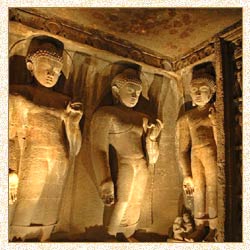 Ajanta
Caves signify the transition from the Hinayana sect of Buddhism to the
Mahayana sect of Buddhism. The Hinayana sect made use of the stupas and
other rock forms to represent Buddha. On the other hand, Mahayana sect
used idols. Cave number 8, 9, 10, 12, 13 and 15 belong to Hinayana, the
older sect. While, those of number 1, 2, 16, 17, 19 and 26 are related
to Mahayana sect. The 19th and 26th caves are Chaityas. Some of the
caves have not been finished till date.
Ajanta
Caves signify the transition from the Hinayana sect of Buddhism to the
Mahayana sect of Buddhism. The Hinayana sect made use of the stupas and
other rock forms to represent Buddha. On the other hand, Mahayana sect
used idols. Cave number 8, 9, 10, 12, 13 and 15 belong to Hinayana, the
older sect. While, those of number 1, 2, 16, 17, 19 and 26 are related
to Mahayana sect. The 19th and 26th caves are Chaityas. Some of the
caves have not been finished till date. 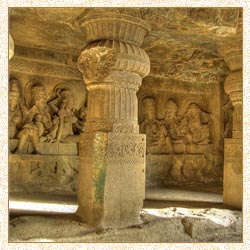 There
are a total of 34 monasteries and temples inside these caves. All of
them date back to somewhere between 5th century AD and 11th century AD
and have been built in a linear pattern. All the caves have different
religious inclinations. Twelve of the caves (cave number 1 to 12) belong
to the Mahayana sect of Buddhism and were built between 550 AD and 750
AD. Seventeen caves (cave number 13 to 29) comprise of Hindu temples and
were constructed between 600 AD and 875 AD.
There
are a total of 34 monasteries and temples inside these caves. All of
them date back to somewhere between 5th century AD and 11th century AD
and have been built in a linear pattern. All the caves have different
religious inclinations. Twelve of the caves (cave number 1 to 12) belong
to the Mahayana sect of Buddhism and were built between 550 AD and 750
AD. Seventeen caves (cave number 13 to 29) comprise of Hindu temples and
were constructed between 600 AD and 875 AD. 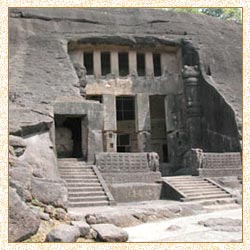 Kanheri
Caves are situated in the heart of the Sanjay Gandhi National Park,
Maharashtra. They lie at a distance of approximately 10 km from
Borivali, Mumbai. They are almost 109 in number and date back to
somewhere between 1st century BC and 9th century AD. Kanheri Caves
signify a golden beginning and the end of Buddhism in the northern
India. Buddhist Monks as well as traders, who traveled for religious
favors, used to make use of these caves on a frequent basis.
Kanheri
Caves are situated in the heart of the Sanjay Gandhi National Park,
Maharashtra. They lie at a distance of approximately 10 km from
Borivali, Mumbai. They are almost 109 in number and date back to
somewhere between 1st century BC and 9th century AD. Kanheri Caves
signify a golden beginning and the end of Buddhism in the northern
India. Buddhist Monks as well as traders, who traveled for religious
favors, used to make use of these caves on a frequent basis. 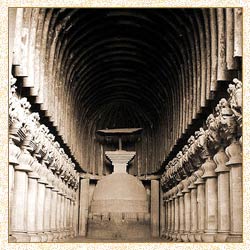 Karla
Caves are situated in the state of Maharashtra, near the Pune-Mumbai
Road. They lie at a distance of approximately 20 km from Lonavla and 40
km from Pune. The caves of Karla date back to the 2nd century BC and are
known for their Chaitya Hall, intricate sculptures and pillars with
ingenious architecture. Chaitya hall boasts of its amazing structural
design. The rooftop is built of teakwood and even the pillars have been
beautifully carved.
Karla
Caves are situated in the state of Maharashtra, near the Pune-Mumbai
Road. They lie at a distance of approximately 20 km from Lonavla and 40
km from Pune. The caves of Karla date back to the 2nd century BC and are
known for their Chaitya Hall, intricate sculptures and pillars with
ingenious architecture. Chaitya hall boasts of its amazing structural
design. The rooftop is built of teakwood and even the pillars have been
beautifully carved. 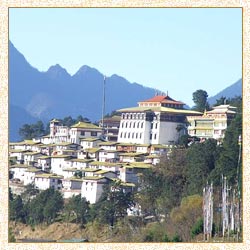 Located
in the Northeastern part of India, Arunachal Pradesh is one of the most
beautiful and picturesque locations in India. The state of Arunachal
Pradesh offers a variety of flora and fauna that is sure to lure any
tourist. For centuries, Arunachal has been the land of Buddhists and
known for some of the largest Buddhist monasteries in India. Some of the
important Buddhist monasteries in Arunachal Pradesh include the Bomdila
monastery and the Tawang monastery.
Located
in the Northeastern part of India, Arunachal Pradesh is one of the most
beautiful and picturesque locations in India. The state of Arunachal
Pradesh offers a variety of flora and fauna that is sure to lure any
tourist. For centuries, Arunachal has been the land of Buddhists and
known for some of the largest Buddhist monasteries in India. Some of the
important Buddhist monasteries in Arunachal Pradesh include the Bomdila
monastery and the Tawang monastery.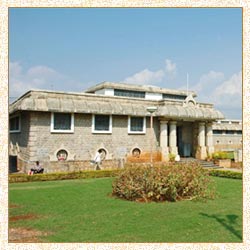 Nagarjunakonda
is a valley situated in Guntur District of Andhra Pradesh. It lies at a
distance of approximately 150 km from the capital city of Hyderabad.
Nagarjuna Konda is named after Nagarjuna, a Buddhist monk, who lived
here around the turn of the 2nd century AD. A magnificent example of
ancient Buddhist architecture, it is remake of the original Buddhist
site. The original valley was shifted, as it was at the danger of being
submerged under the Nagarjuna Sagar Dam. The valley symbolizes a lost
civilization, which flourished thousand years ago.
Nagarjunakonda
is a valley situated in Guntur District of Andhra Pradesh. It lies at a
distance of approximately 150 km from the capital city of Hyderabad.
Nagarjuna Konda is named after Nagarjuna, a Buddhist monk, who lived
here around the turn of the 2nd century AD. A magnificent example of
ancient Buddhist architecture, it is remake of the original Buddhist
site. The original valley was shifted, as it was at the danger of being
submerged under the Nagarjuna Sagar Dam. The valley symbolizes a lost
civilization, which flourished thousand years ago. 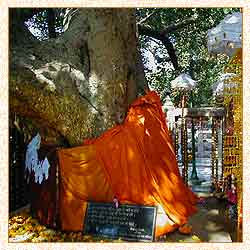 As
his former garments had perished, he took a yellow shroud from the
corpse of a servant girl awaiting cremation nearby. To help him wash it,
Indra Deva struck the ground to form a pond. A local Brahmin's daughter,
Sujata, approached him and offered him a golden bowl filled with rice,
prepared in the essence of the milk of one thousand cows. Renewed, he
bathed and then walked to a nearby cave to continue his meditation.
However, the earth shook and the voices of the earlier Buddhas resounded
in the air, telling him that this was not the place of his
enlightenment. They advised him to proceed to the nearby Bodhi tree. The
sites, where these events took place, were seen by the Chinese pilgrims
in the fifth and seventh centuries. The records mention that stupas had
been constructed at each of the sites. However, none of these exist
today.
As
his former garments had perished, he took a yellow shroud from the
corpse of a servant girl awaiting cremation nearby. To help him wash it,
Indra Deva struck the ground to form a pond. A local Brahmin's daughter,
Sujata, approached him and offered him a golden bowl filled with rice,
prepared in the essence of the milk of one thousand cows. Renewed, he
bathed and then walked to a nearby cave to continue his meditation.
However, the earth shook and the voices of the earlier Buddhas resounded
in the air, telling him that this was not the place of his
enlightenment. They advised him to proceed to the nearby Bodhi tree. The
sites, where these events took place, were seen by the Chinese pilgrims
in the fifth and seventh centuries. The records mention that stupas had
been constructed at each of the sites. However, none of these exist
today. 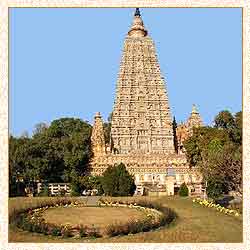 After
spending forty-nine days in meditation, close to the seat of
enlightenment, Buddha left Bodhgaya on foot to meet the five ascetics at
Benares, where He was going to turn the first wheel of Dharma. After
accomplishing this task, he returned briefly to Uruvela and introduced
the three brothers, namely Uruvela, Gaya and Nadi Kasyapa, to his
teachings. They, along with a thousand followers of their own, became
monks and accompanied Shakyamuni to Rajgir.
After
spending forty-nine days in meditation, close to the seat of
enlightenment, Buddha left Bodhgaya on foot to meet the five ascetics at
Benares, where He was going to turn the first wheel of Dharma. After
accomplishing this task, he returned briefly to Uruvela and introduced
the three brothers, namely Uruvela, Gaya and Nadi Kasyapa, to his
teachings. They, along with a thousand followers of their own, became
monks and accompanied Shakyamuni to Rajgir. 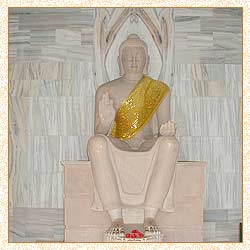 The
name Deer Park is derived from an occasion in one of Shakyamuni's former
lives as a bodhisattva. He was leading a herd of deer. After much
indiscriminate plundering of the herd by a local king, an agreement was
made with him that one of them would be offered to him and only when it
is necessary. The turn came of a doe. She was supposed to give birth
shortly and wished to delay her turn until then. Bodhisattva offered
himself instead of her. This act impressed the king so much that he not
only resolved to refrain from killing deer in future, but also gave the
park to them.
The
name Deer Park is derived from an occasion in one of Shakyamuni's former
lives as a bodhisattva. He was leading a herd of deer. After much
indiscriminate plundering of the herd by a local king, an agreement was
made with him that one of them would be offered to him and only when it
is necessary. The turn came of a doe. She was supposed to give birth
shortly and wished to delay her turn until then. Bodhisattva offered
himself instead of her. This act impressed the king so much that he not
only resolved to refrain from killing deer in future, but also gave the
park to them.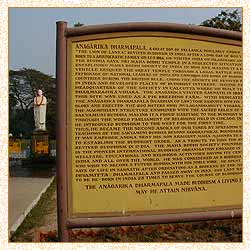 Formerly,
two great stupas adorned the site. However, today only the Dhamekha
remains, assigned by its inscription to the sixth century. The
Dharmarajika stupa built by Ashoka was pulled down in the eighteenth
century by Jagat Singh, who consigned the casket of relics contained
within it to the Ganges River. Huen Tsang described that Ashoka's
pillar, which stood in front of the stupa, was so highly polished that
it constantly reflected the statue of Buddha.
Formerly,
two great stupas adorned the site. However, today only the Dhamekha
remains, assigned by its inscription to the sixth century. The
Dharmarajika stupa built by Ashoka was pulled down in the eighteenth
century by Jagat Singh, who consigned the casket of relics contained
within it to the Ganges River. Huen Tsang described that Ashoka's
pillar, which stood in front of the stupa, was so highly polished that
it constantly reflected the statue of Buddha.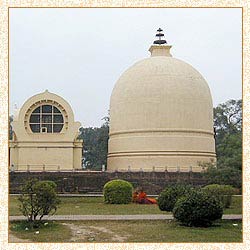 Coming
to Pava, the blacksmith's son, Kunda, offered him a meal, which included
meat. It is said that all the Buddhas of this world eat meal, containing
meat, on the eve of their passing away. Buddha accepted, but directed
that no one else should partake in the food. Later, it was learned that
the meat was bad. He told Ananda that the merit created by offering an
enlightened one his last meal is equal to that of offering food to him
just prior to his enlightenment.
Coming
to Pava, the blacksmith's son, Kunda, offered him a meal, which included
meat. It is said that all the Buddhas of this world eat meal, containing
meat, on the eve of their passing away. Buddha accepted, but directed
that no one else should partake in the food. Later, it was learned that
the meat was bad. He told Ananda that the merit created by offering an
enlightened one his last meal is equal to that of offering food to him
just prior to his enlightenment. 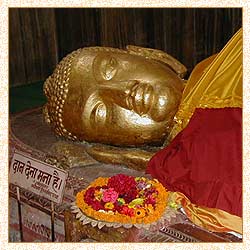 As
the third watch of the night approached, Buddha asked His disciples
thrice if there were any remaining perplexities concerning the doctrine
or the discipline. Receiving silence, He gave them the famous
exhortation - "Impermanence is inherent in all things. Work out
your own salvation with diligence". Then, passing through the
meditative absorptions, Shakyamuni Buddha entered Mahaparinirvana. The
earth shook, stars shot from the heavens, the sky in the ten directions
burst forth in flames and the air was filled with celestial music. The
master's body was washed and robed once more, then wrapped in a thousand
shrouds and placed in a casket of precious materials.
As
the third watch of the night approached, Buddha asked His disciples
thrice if there were any remaining perplexities concerning the doctrine
or the discipline. Receiving silence, He gave them the famous
exhortation - "Impermanence is inherent in all things. Work out
your own salvation with diligence". Then, passing through the
meditative absorptions, Shakyamuni Buddha entered Mahaparinirvana. The
earth shook, stars shot from the heavens, the sky in the ten directions
burst forth in flames and the air was filled with celestial music. The
master's body was washed and robed once more, then wrapped in a thousand
shrouds and placed in a casket of precious materials.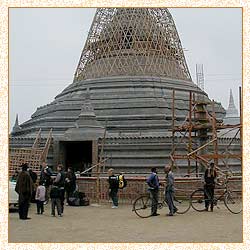 Kushinagar
was rediscovered and identified before the end of the last century.
Excavations have revealed that a monastic tradition flourished here for
a long time. The remains of ten different monasteries, dating from the
fourth century to the eleventh century, have been found. Most of these
ruins are now enclosed in a park, in the midst of which stands a modern
shrine housing a large recumbent figure of the Buddha. This statue was
originally made in Mathura and installed at Kushinagar by the monk
Haribhadra, during the reign of King Kumaragupta, the alleged founder of
Nalanda Monastery. When the statue was discovered, late in the last
century, it was broken. However, it has now been restored. Behind this
shrine, is a large stupa dating from the Gupta age. The Burmese restored
the stupa early in this century. Not far away, is a small temple, built
on the Buddha's last resting place in front of the sala grove. It has
also been restored. There is a large stupa to the east, now called
Ramabhar.
Kushinagar
was rediscovered and identified before the end of the last century.
Excavations have revealed that a monastic tradition flourished here for
a long time. The remains of ten different monasteries, dating from the
fourth century to the eleventh century, have been found. Most of these
ruins are now enclosed in a park, in the midst of which stands a modern
shrine housing a large recumbent figure of the Buddha. This statue was
originally made in Mathura and installed at Kushinagar by the monk
Haribhadra, during the reign of King Kumaragupta, the alleged founder of
Nalanda Monastery. When the statue was discovered, late in the last
century, it was broken. However, it has now been restored. Behind this
shrine, is a large stupa dating from the Gupta age. The Burmese restored
the stupa early in this century. Not far away, is a small temple, built
on the Buddha's last resting place in front of the sala grove. It has
also been restored. There is a large stupa to the east, now called
Ramabhar.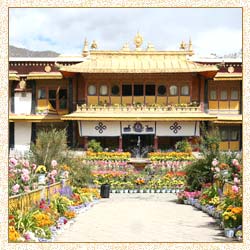 Residence
of the Dalai Lama
Residence
of the Dalai Lama Sanchi
is situated in the state of Madhya Pradesh in India. It lies at a
distance of approximately 52 km from the capital city of Bhopal and 10
km from Vidisha. The major attractions of Sanchi include a number of
Buddhist stupas, monasteries, temples and pillars. All these structures
date back to somewhere between 3rd century BC and 12th century AD. The
Mauryan emperor Ashoka founded all the stupas at Sanchi in the honor of
Lord Buddha. They have the distinction of being included by UNESCO in
its list of World Heritage Sites.
Sanchi
is situated in the state of Madhya Pradesh in India. It lies at a
distance of approximately 52 km from the capital city of Bhopal and 10
km from Vidisha. The major attractions of Sanchi include a number of
Buddhist stupas, monasteries, temples and pillars. All these structures
date back to somewhere between 3rd century BC and 12th century AD. The
Mauryan emperor Ashoka founded all the stupas at Sanchi in the honor of
Lord Buddha. They have the distinction of being included by UNESCO in
its list of World Heritage Sites. 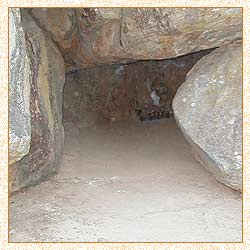 Bodh
Gaya is where Siddhartha Gautama became the Buddha as he sat in
meditation on the diamond seat under the Bodhi (Ficus Religiosa) tree.
Bodh
Gaya is where Siddhartha Gautama became the Buddha as he sat in
meditation on the diamond seat under the Bodhi (Ficus Religiosa) tree.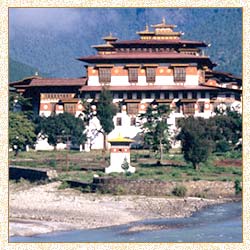 Tourist
Attractions of Dharamsala
Tourist
Attractions of Dharamsala